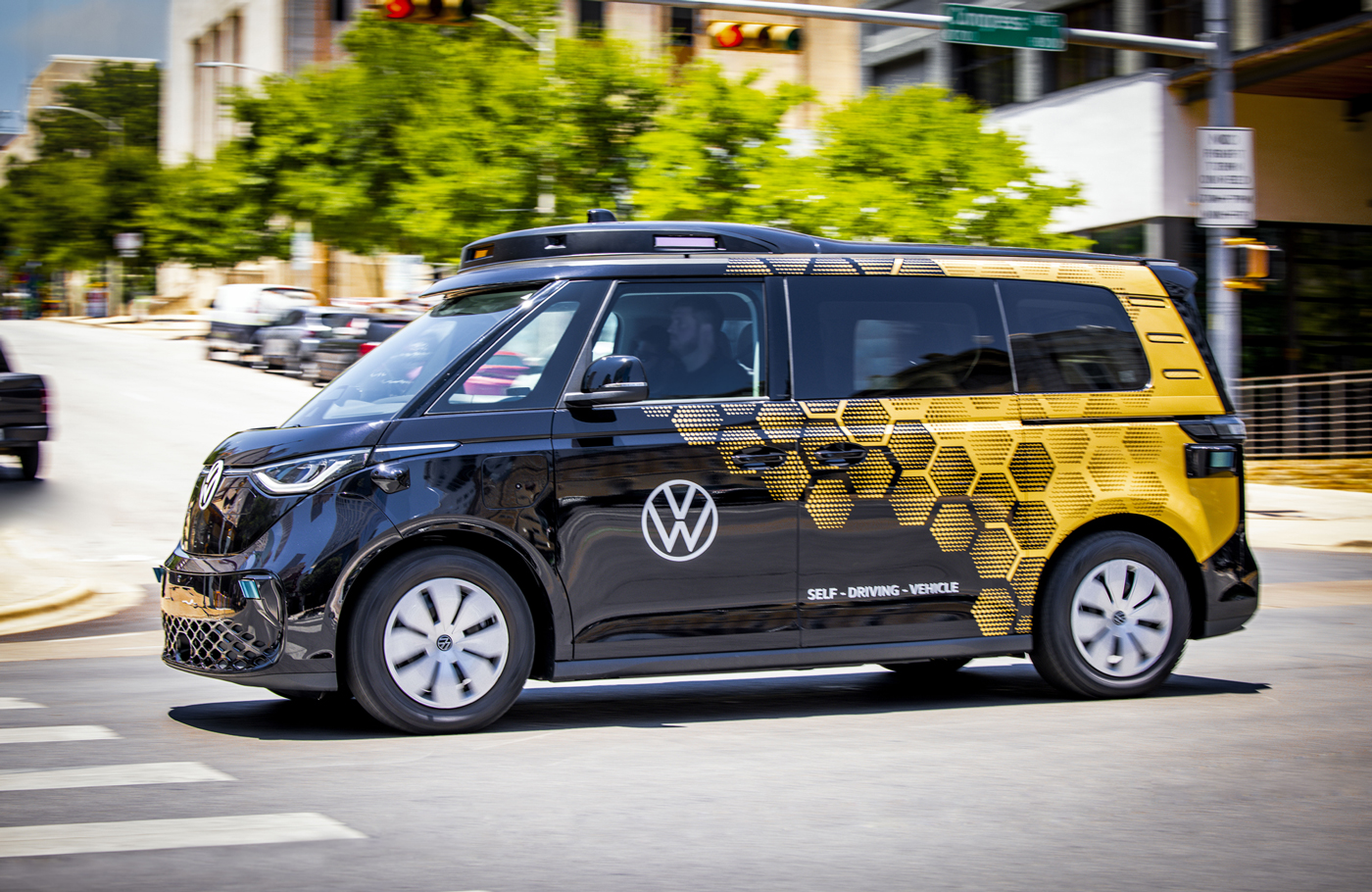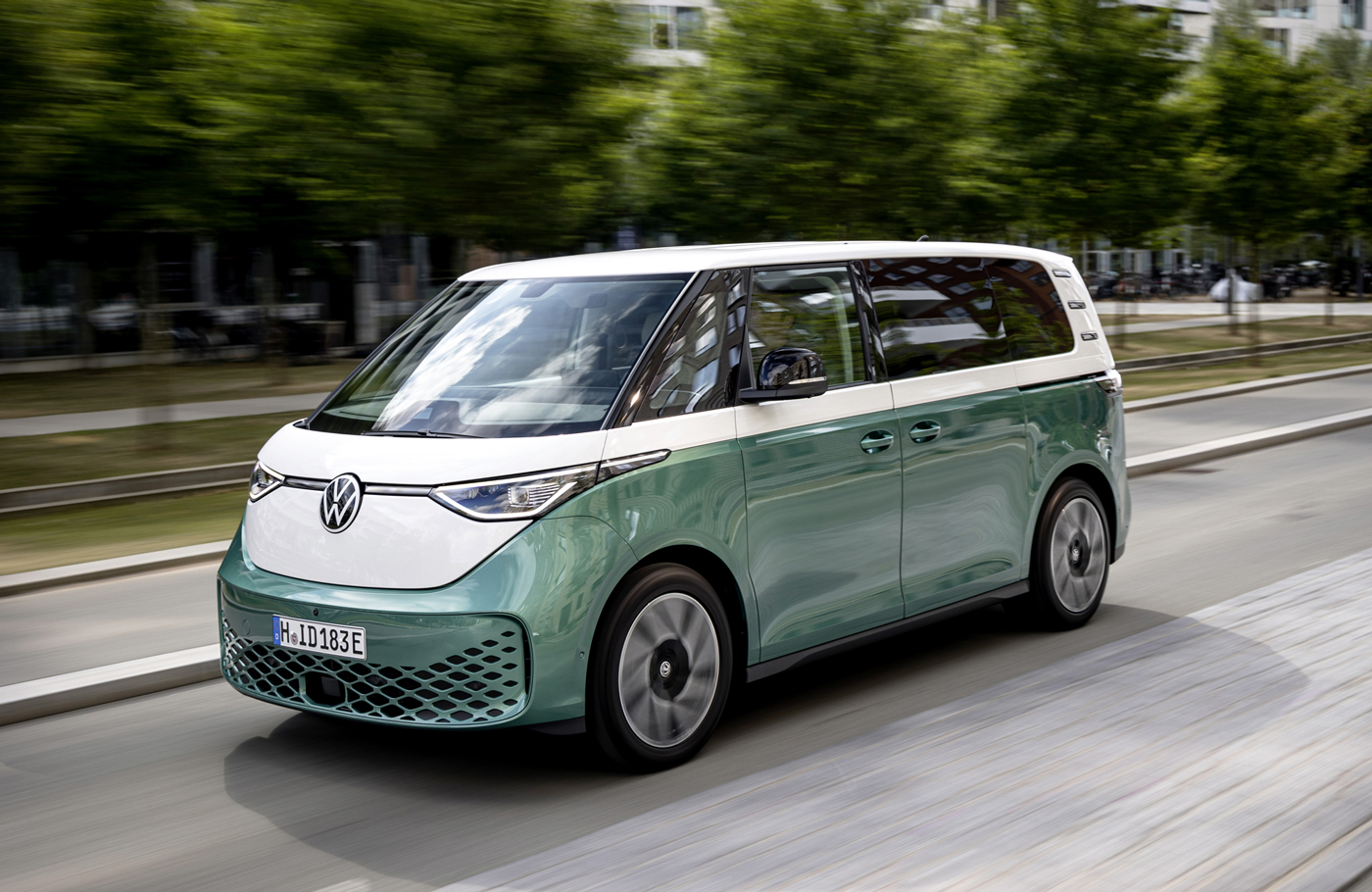Autonomy abuzz all around?
Autonomy abuzz all around?
Volkswagen Commercial Vehicles (VWCV) is making great strides in the development of autonomous light commercial vehicles for use in mobility and transport services. En route to series production readiness, the self-driving all-electric Volkswagen ID. Buzz AD recently hit the road, giving political decision-makers, public authorities, and business representatives an idea of the vehicle’s control capabilities.
Electrification of light commercial vehicles (LCVs) makes sense, as they’re usually used for last-mile deliveries or transport confined to within city limits. This means that the range handicap associated with electric movers isn’t of such great concern.
It’s no wonder, then, that VWCV sprang on the (electrified) bandwagon with its ID. Buzz – an update to the iconic hippie-era T1 Transporter – a few years ago. Debuting as a concept car at the 2017 North American International Auto Show, the production vehicle was unveiled in March 2022 and manufacturing started in June of that year. The European market has received two derivatives: the five-seater ID. Buzz and the aptly named cargo van, ID. Buzz Cargo. A seven-seater will join the ranks this year and will also be made available in the US market.
The “people’s wagon” has taken things even further, however, as it plans to add autonomy to this electric LCV. In 2021, Munich witnessed a significant leap in autonomous driving technology. VWCV, in collaboration with Argo AI (which has since closed its doors), tested the first self-driving prototypes of the ID. Buzz. This venture aimed to introduce Level 4 autonomous driving tech in vans, positioning the companies as pioneers in autonomous transportation for both goods and passengers.


Christian Senger, member of the board of management of VWCV with responsibility for the development of autonomous driving, relates the brand’s vision: “By 2025, we envisioned the ID. Buzz autonomously transporting people in select cities and revolutionising goods and package delivery.”
Fast-forward to 2023: the ID. Buzz Autonomous Driving (AD) hit the road in Germany, carrying political decision-makers, public authorities, and business representatives to give them an idea of the vehicle’s control capabilities. Volkswagen’s test programme also launched in parallel in Austin, Texas.
The AD vehicle development process is focused on the vehicle’s commercial use in European and North American urban centres, both for ridesharing schemes and transport services. It offers mass production technology and is equipped with a self-driving system from tech company Mobileye (which is filling the gap after Argo AI’s closure). The growing test fleet collects data on miles driven in a variety of driving scenarios. Each of the vehicles – which are classified as level IV vehicles according to the SAE standard – is equipped with cameras, radar, and lidar technology.
The Volkswagen Group’s subsidiary, MOIA, is also contributing its data to the daily development work of the ID. Buzz AD. MOIA has been on the market as a mobility provider of ridesharing services since 2019 and has transported more than 8.5 million passengers to date.
“Expanding our autonomous vehicle programme to North America is the next step in our global strategic roadmap and the result of a long-term investment,” says Senger. “This will help us to test, validate, and refine the technology on American roads as well.”
During the test phase, all vehicles are occupied at all times by supervising human drivers. The large-capacity model offers space for four passengers and can be produced in large quantities once it is ready for series production, in order to meet growing mobility and transport requirements.
The launch of the testing programme in Texas at the Volkswagen Group of America (VWGoA) marked a further boost for the Volkswagen Group’s global research and development of autonomous vehicles. VWGoA will lead the strategy and business development in the US and has established a subsidiary called Volkswagen ADMT to support the roll-out of its autonomous vehicle programme. The company also plans to employ team members who worked with Argo AI.
“We are excited and ready to roll out our autonomous pilot and test fleet in Austin,” says Katrin Lohmann, president of Volkswagen ADMT. “We selected Austin as the first US hub, as the city has a track record for embracing innovation and offers a conducive climate for the testing of autonomous vehicles. We are committed to continuing an open and collaborative dialogue with the city and its diverse stakeholders.”
“We are thrilled to bring our exciting ID. Buzz vehicles to American roads”, adds Pablo Di Si, president and CEO of VWGoA. “Expanding the Volkswagen Group’s global autonomous driving vehicle programme to the United States marks an important milestone for us. In the future, we will tap into rising demand for new mobility services, and with our iconic ID. Buzz we will also offer a truly captivating product to support transportation services American consumers can rely upon and trust.”
Unlike in Germany, where MOIA will be the first to use autonomous vehicles, Volkswagen will not operate autonomous driving services itself in the US in the future. Instead, this will be handled by external companies from the mobility and transport sector.
VWGoA plans to grow its test fleet in Austin and progressively expand the testing operation to at least four more American cities. Building upon investments throughout this initial pilot, VWGoA anticipates a commercial launch of autonomous driving vehicles in Austin by 2026.
Autonomy certainly is abuzz all around!
Published by
Focus on Transport
focusmagsa






